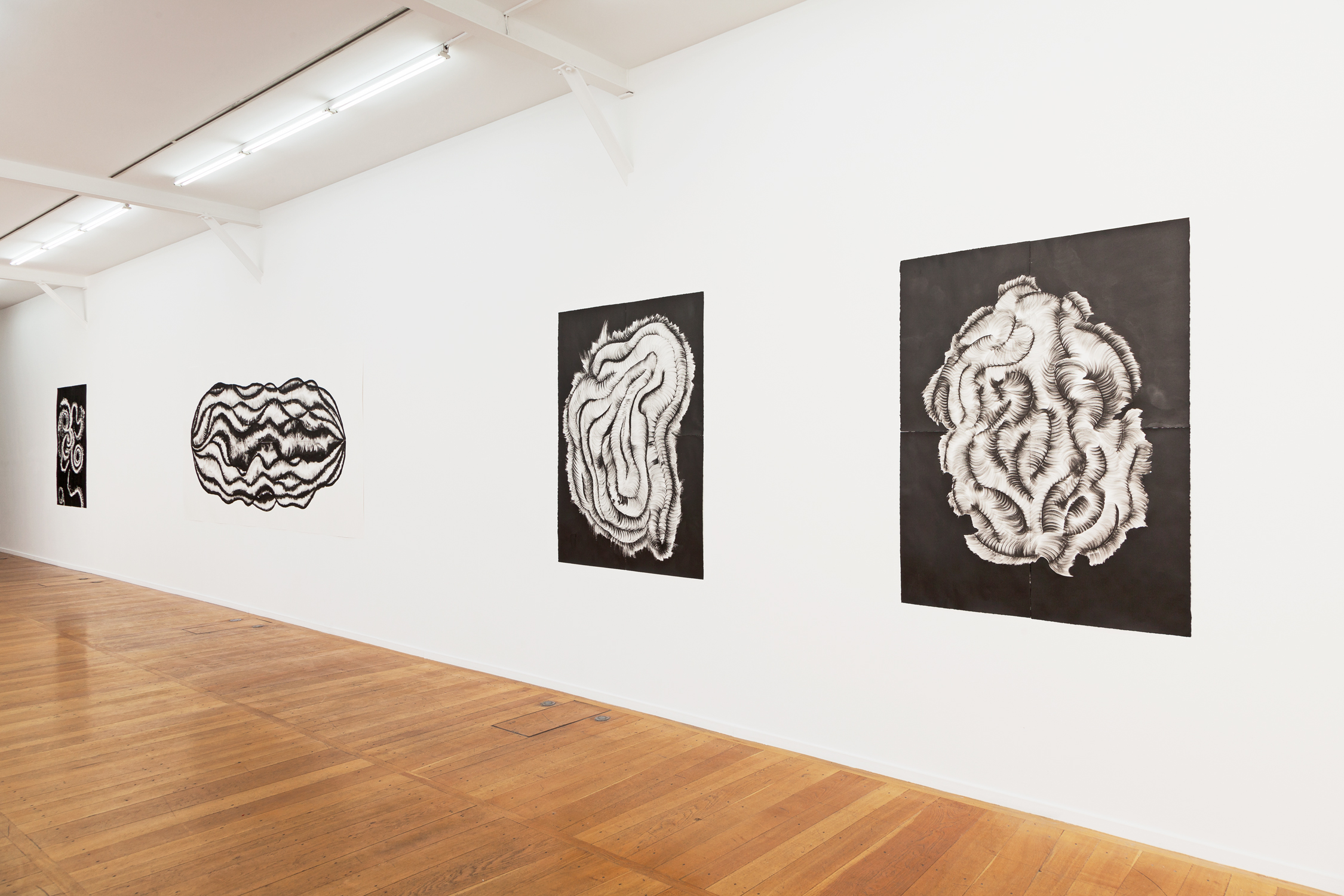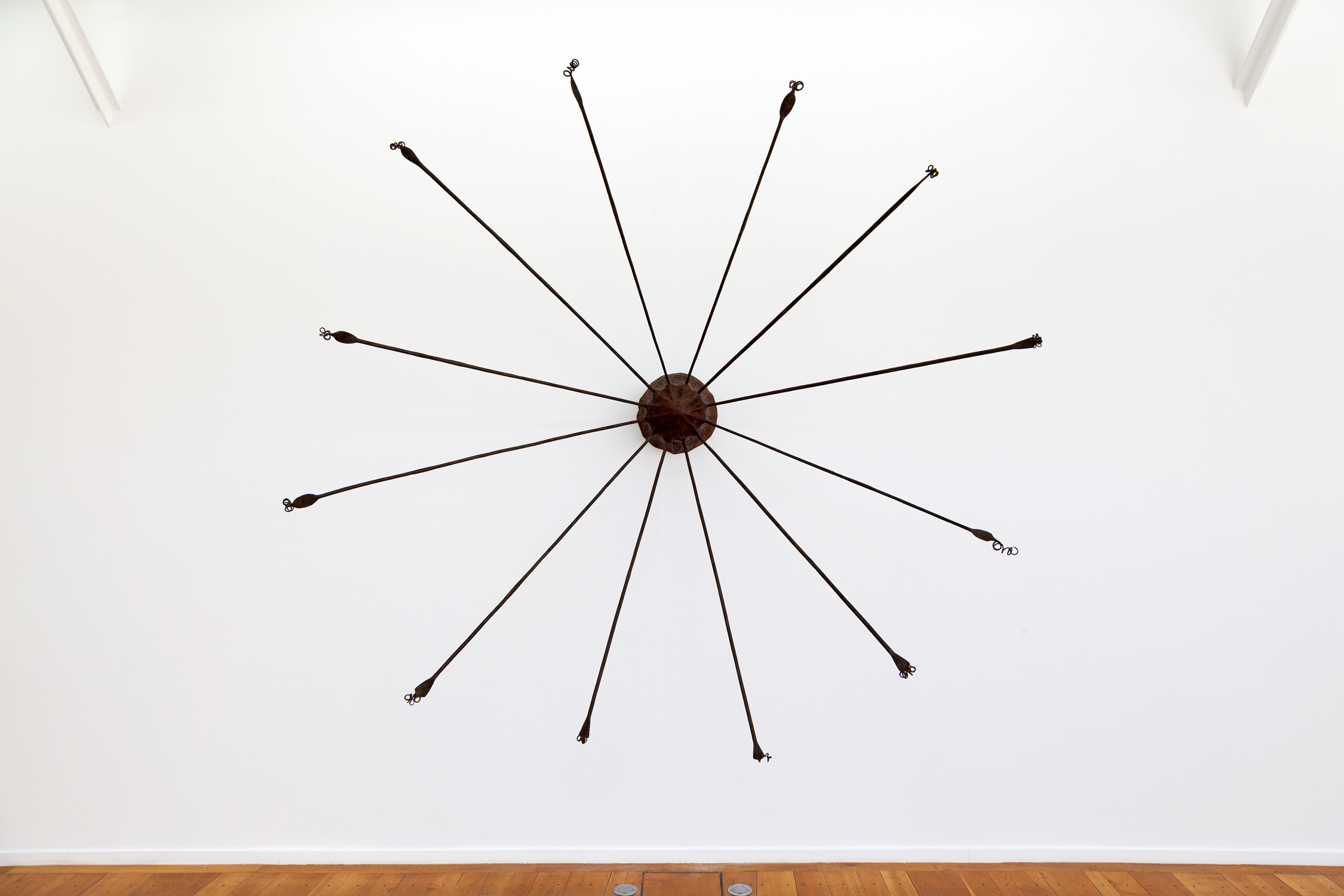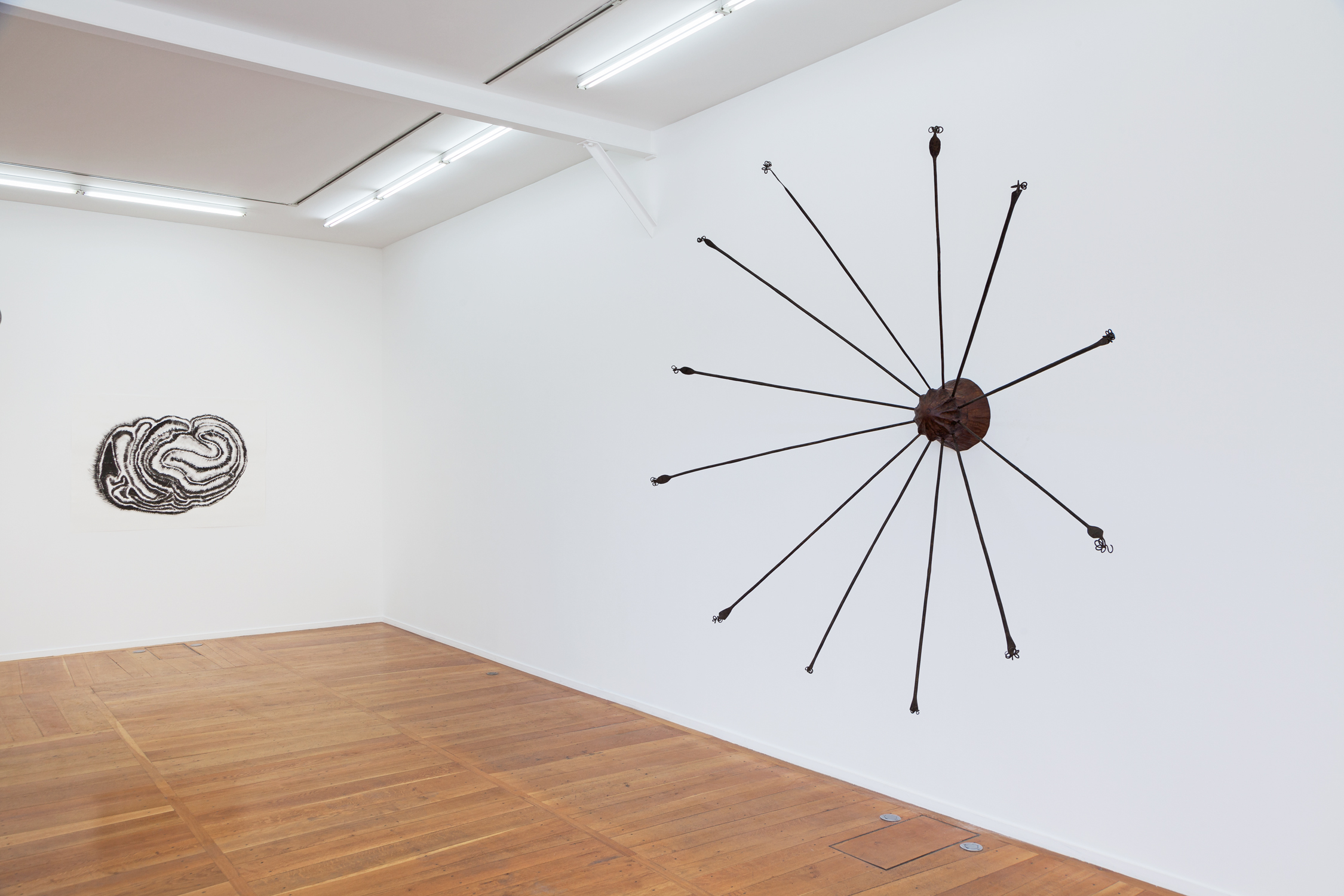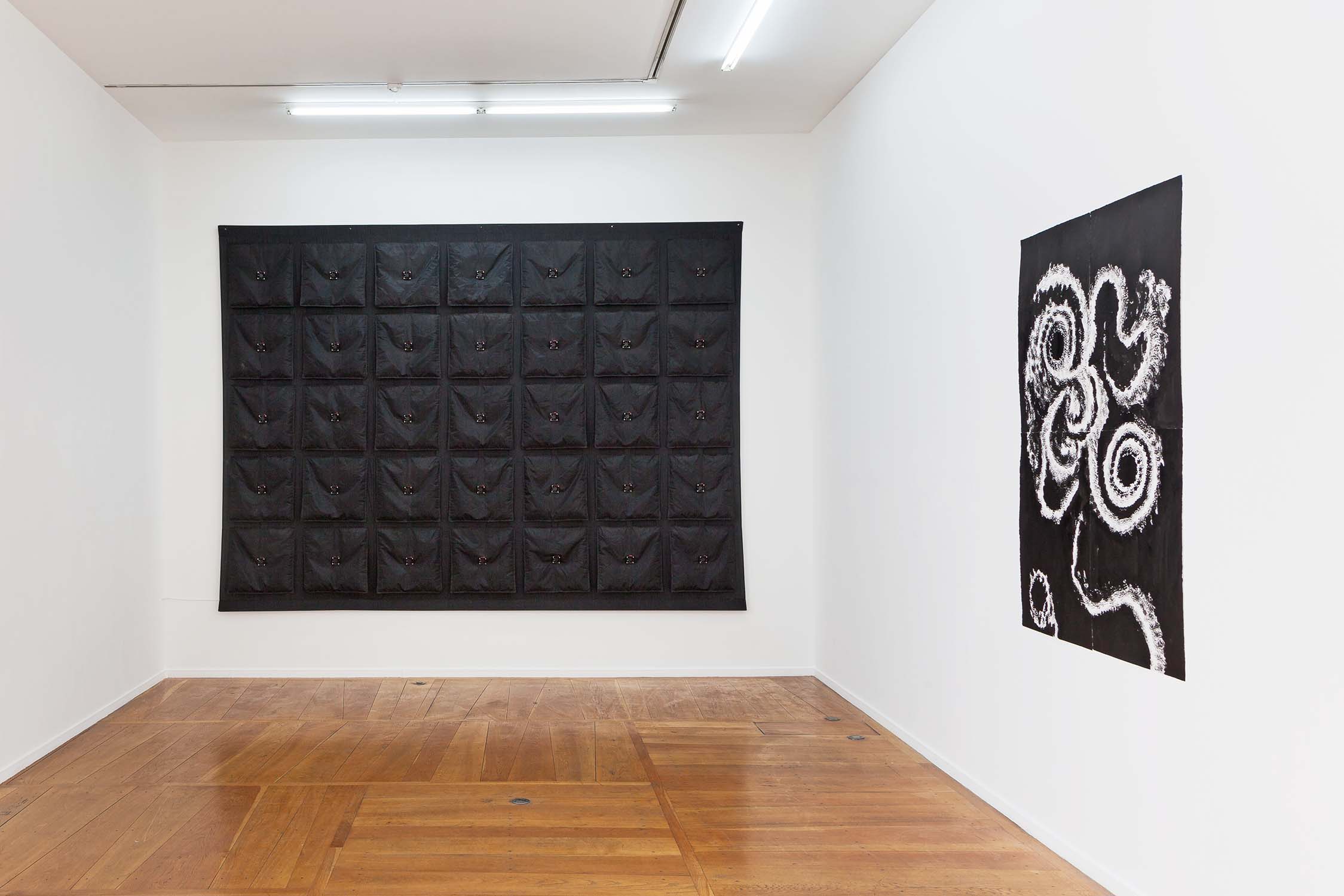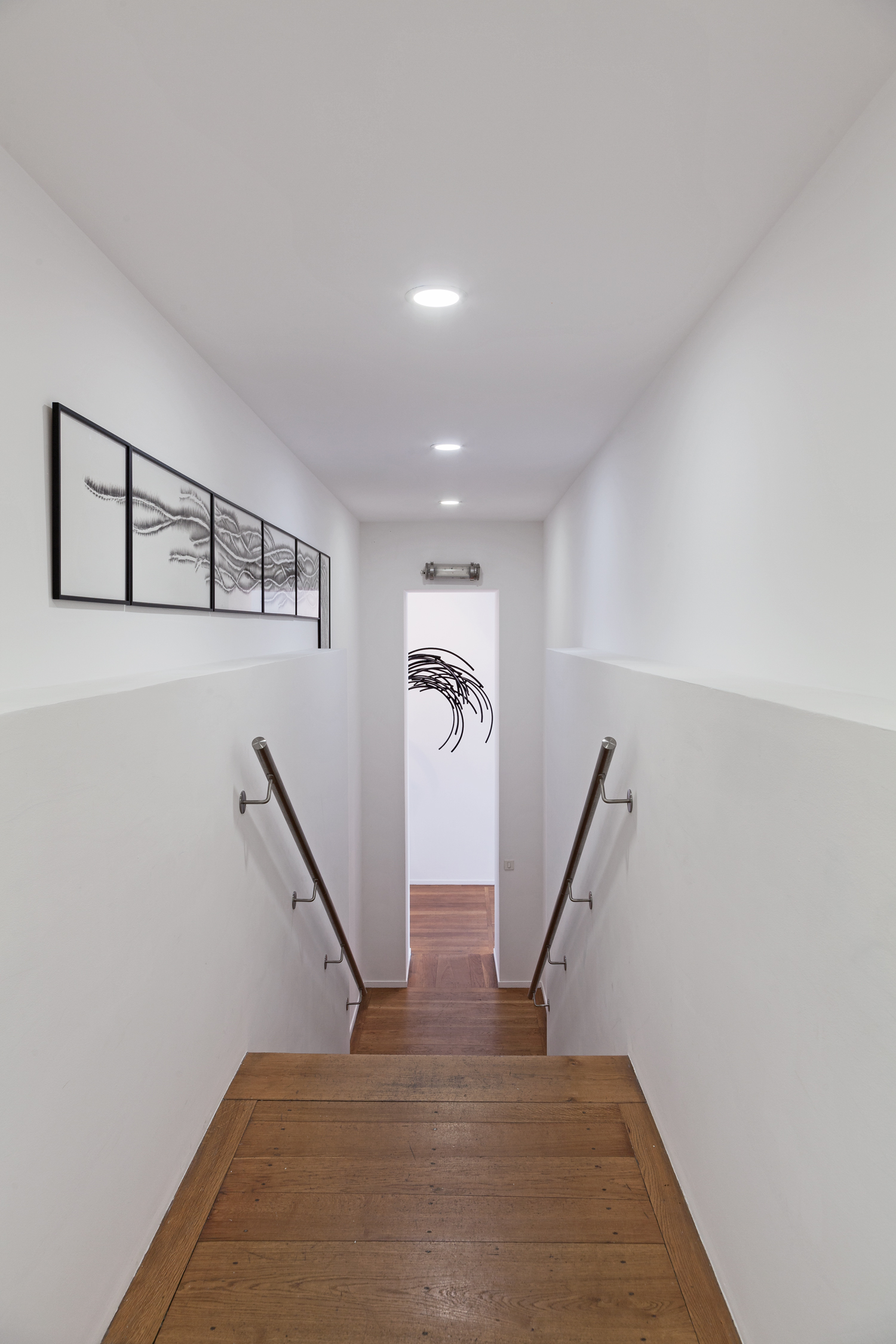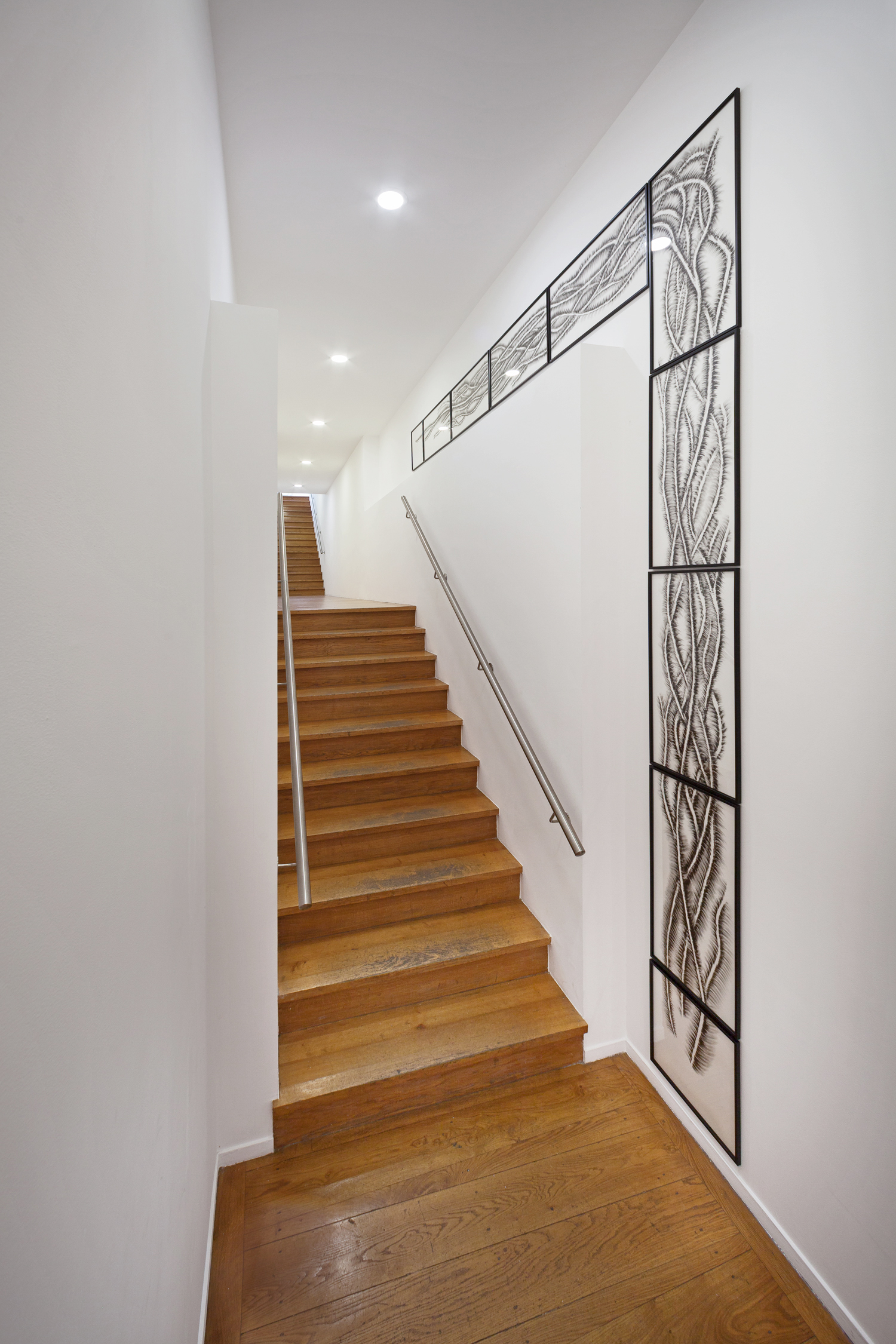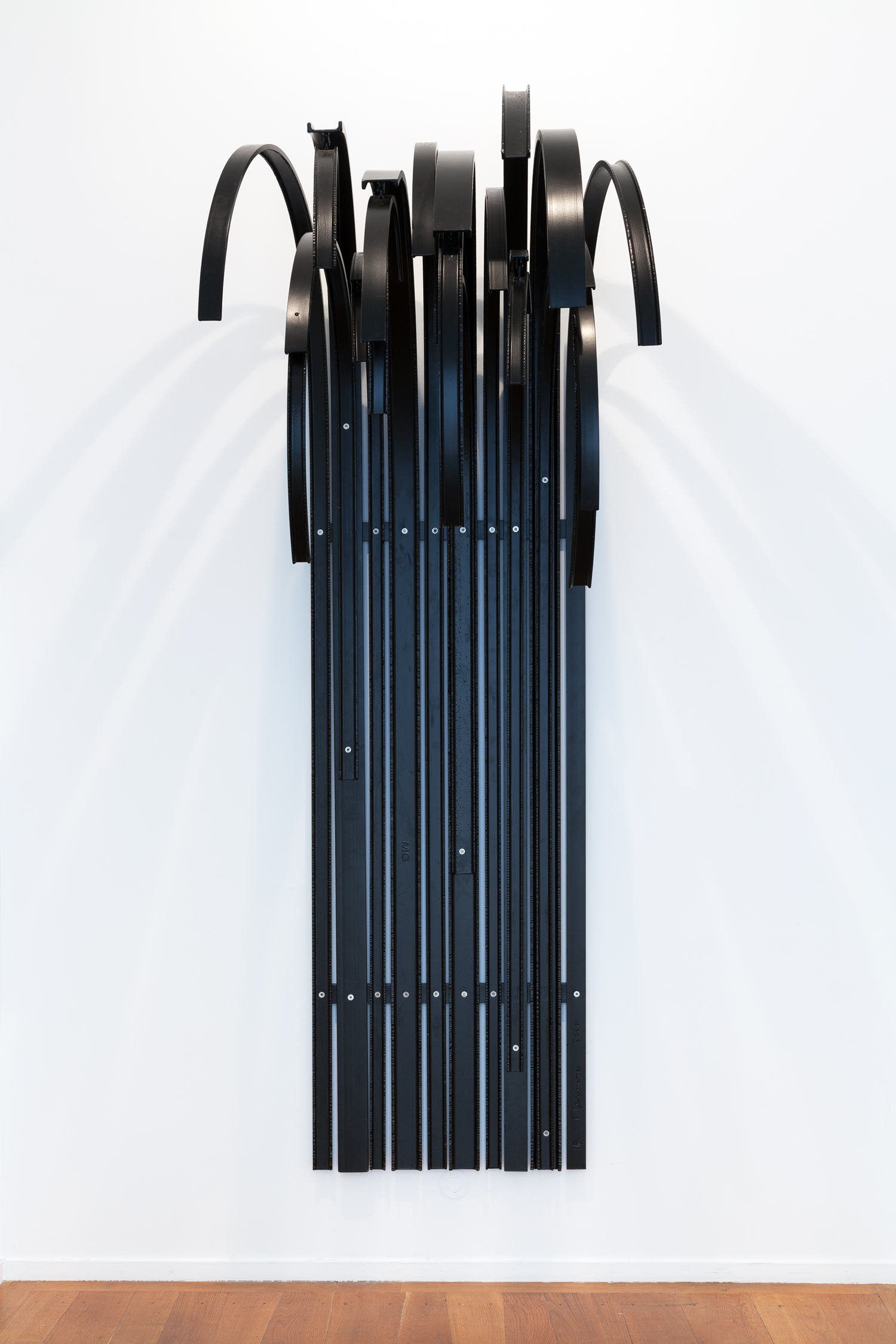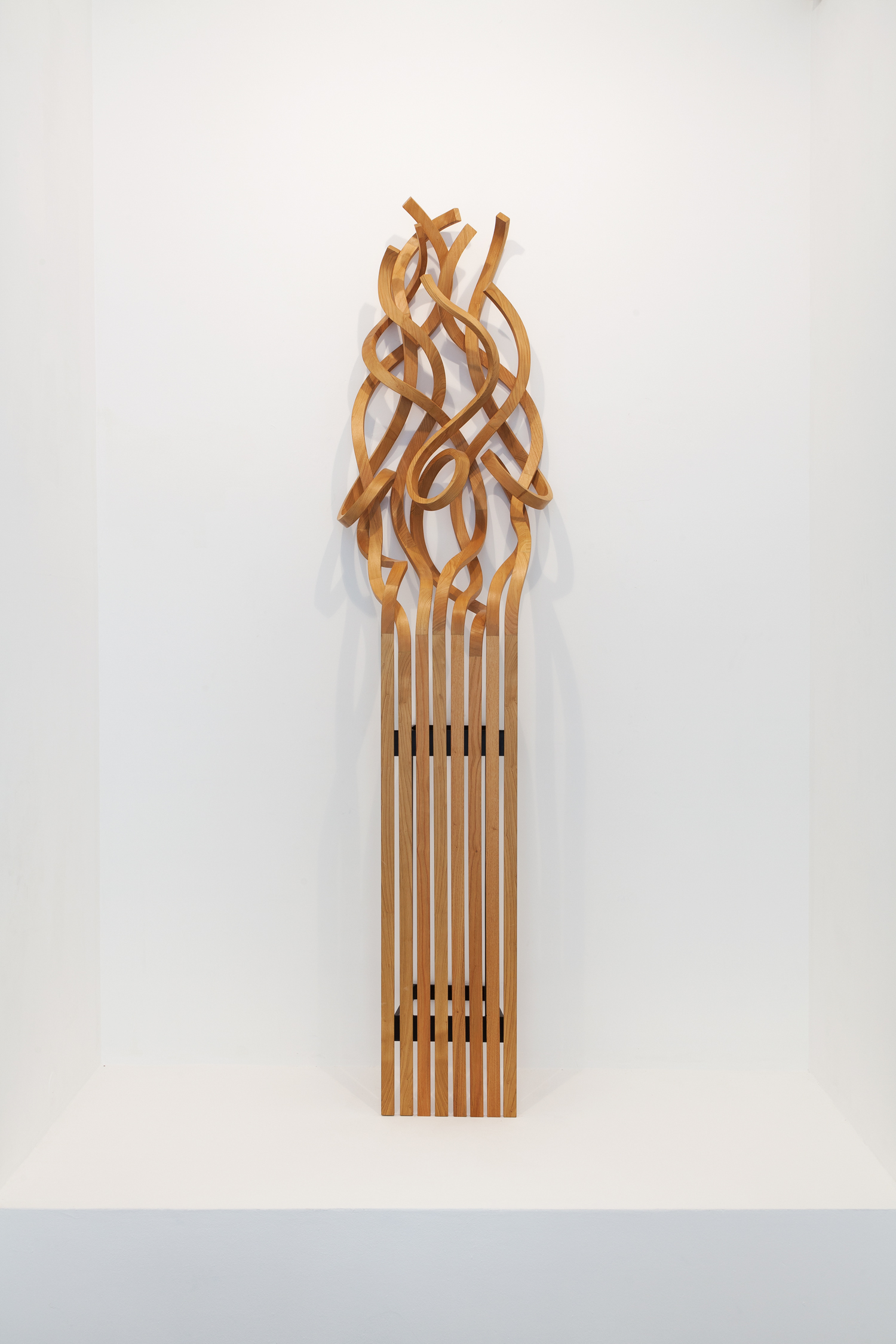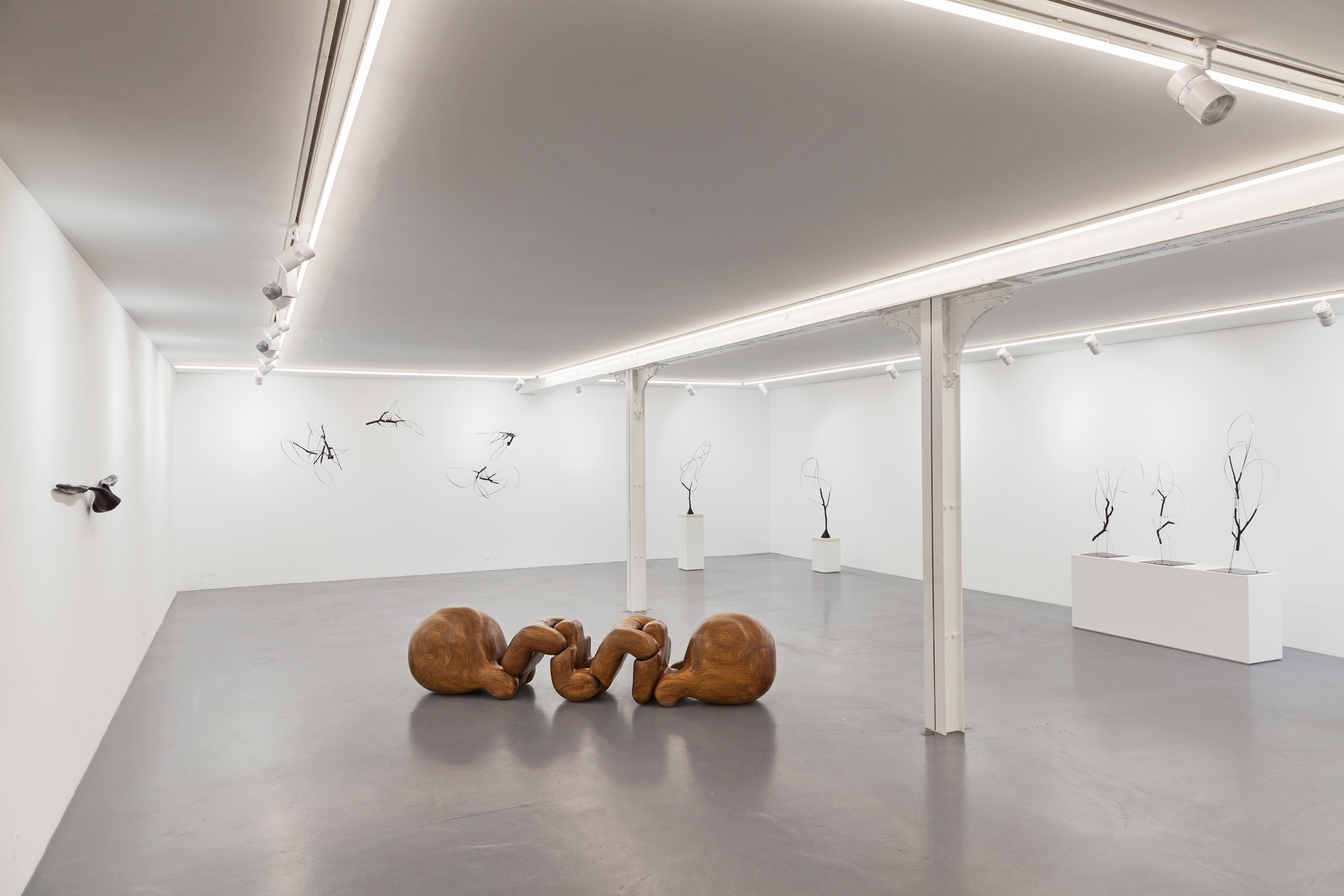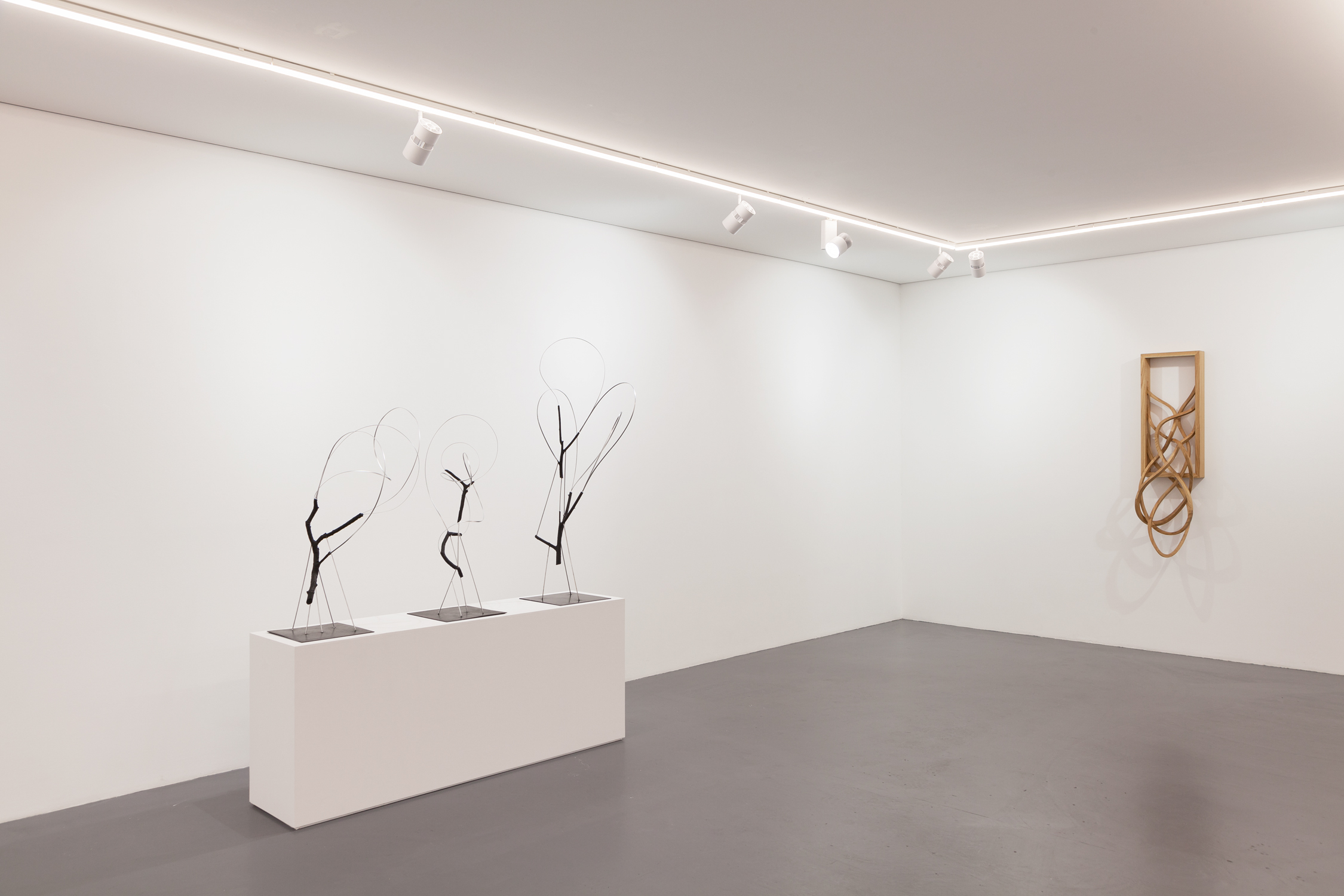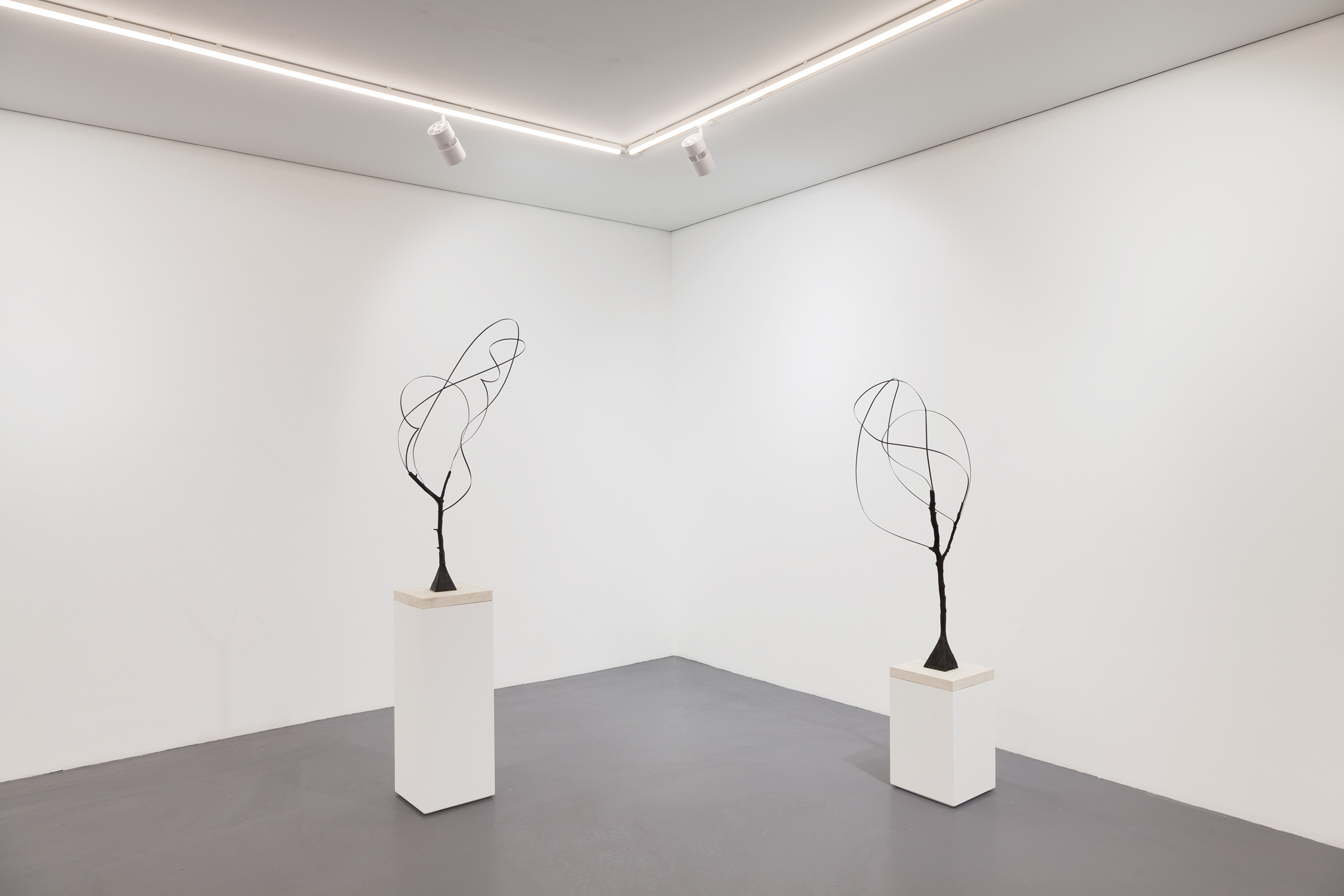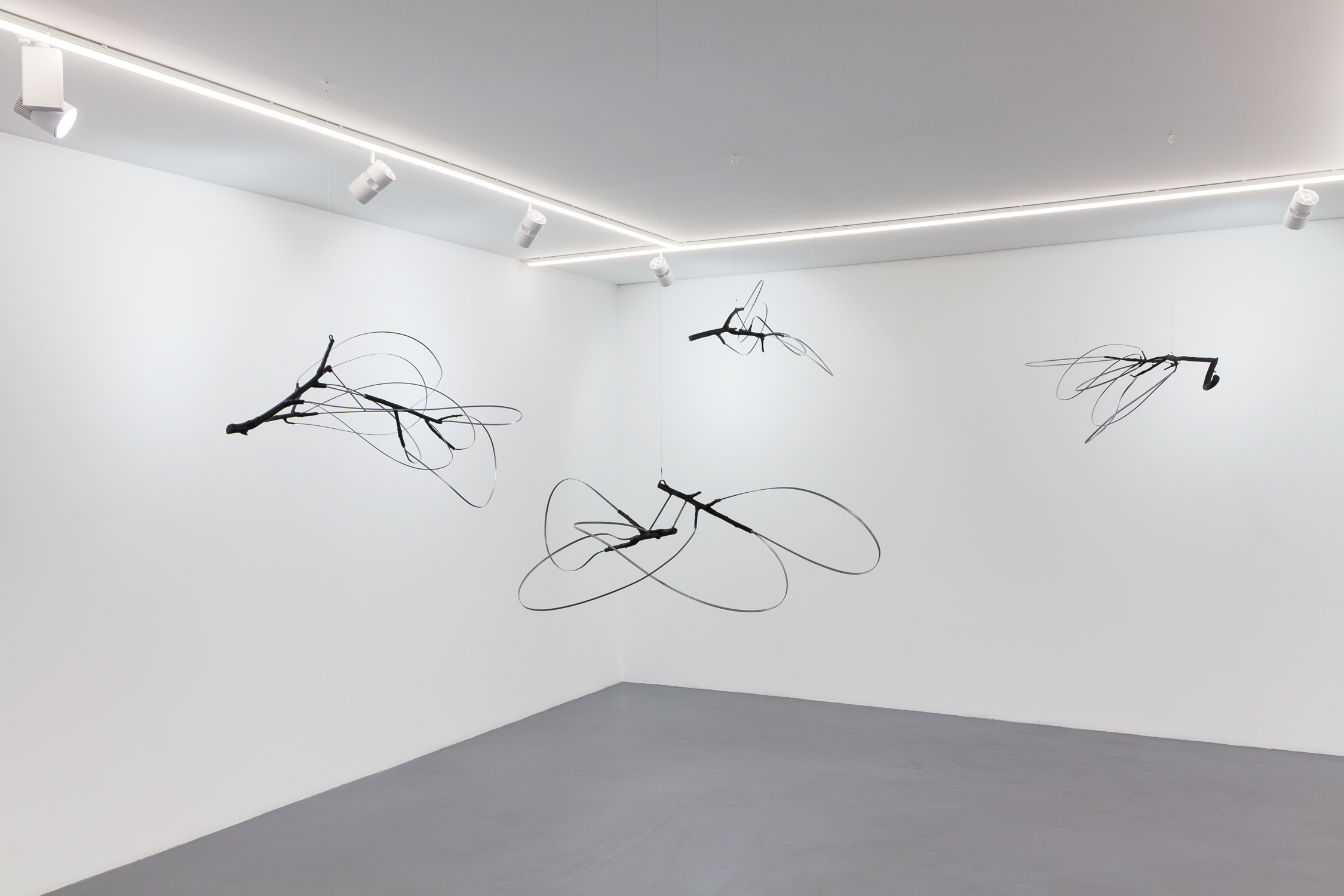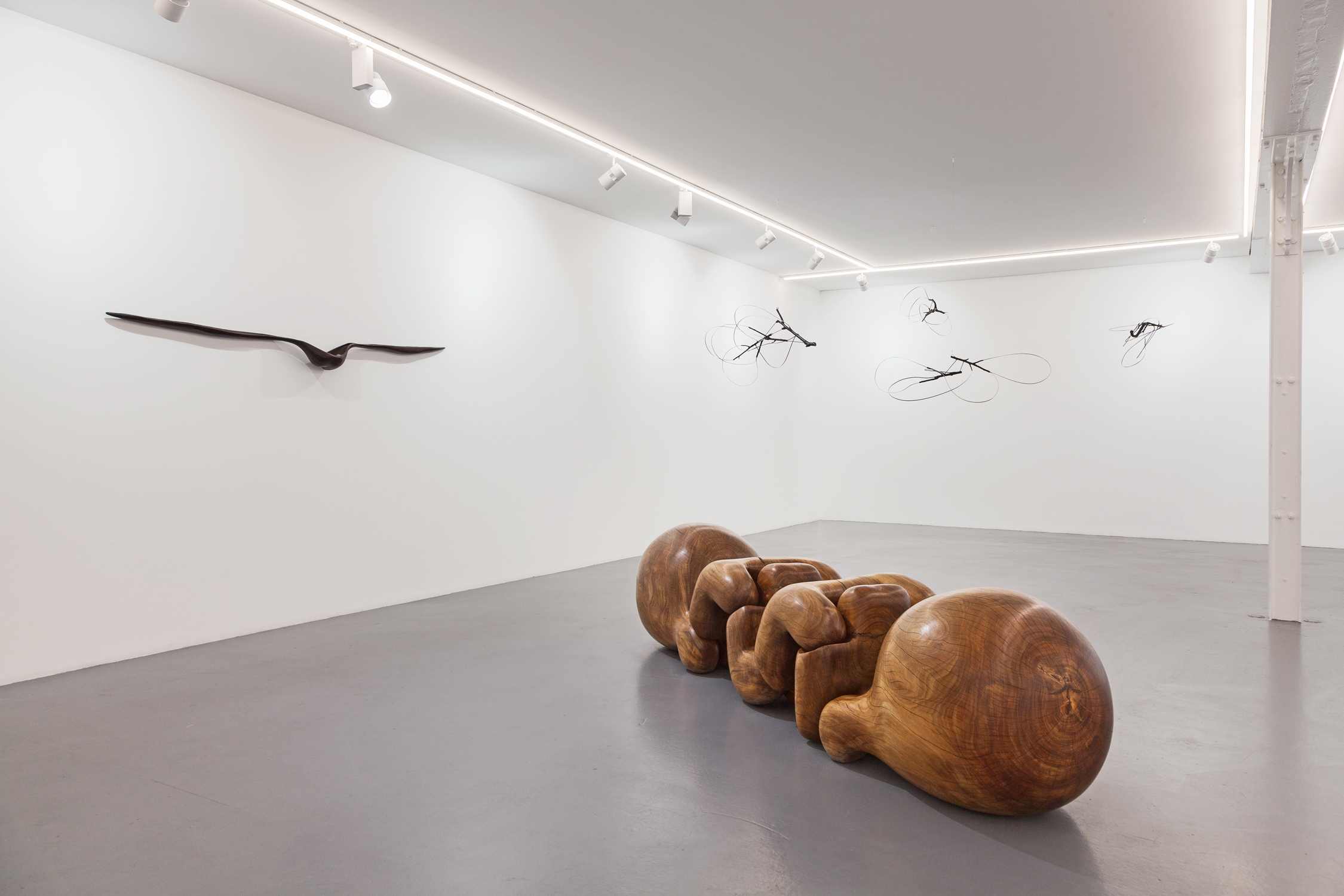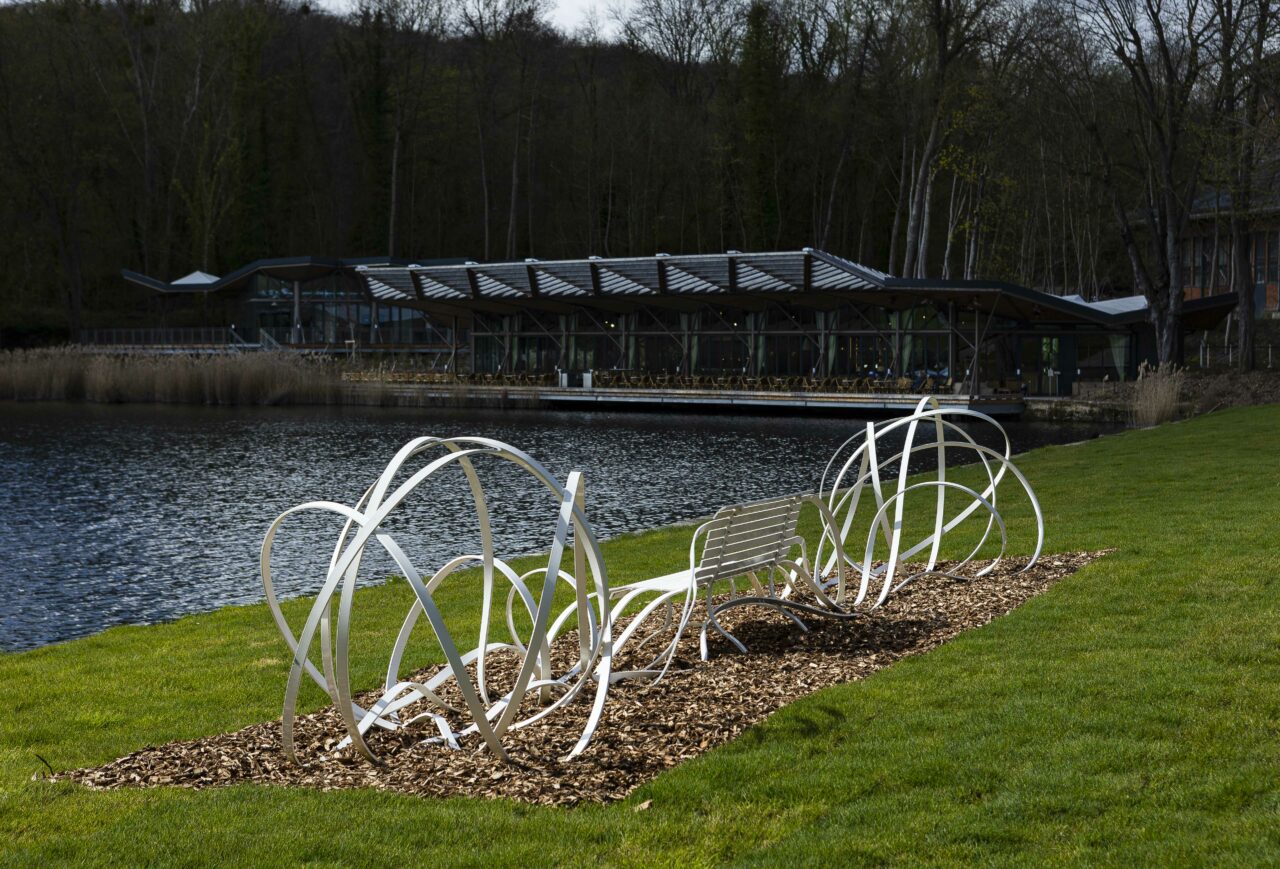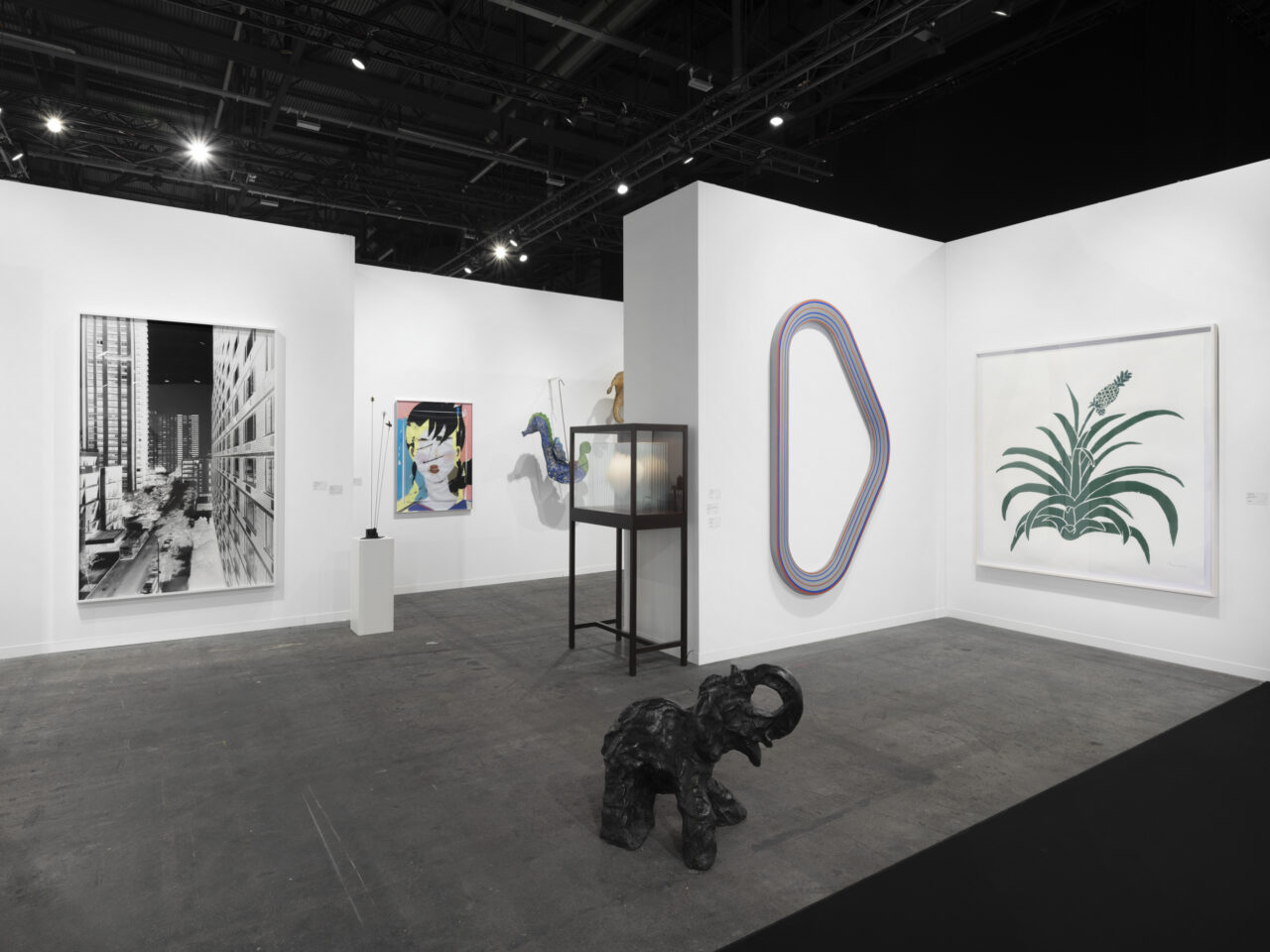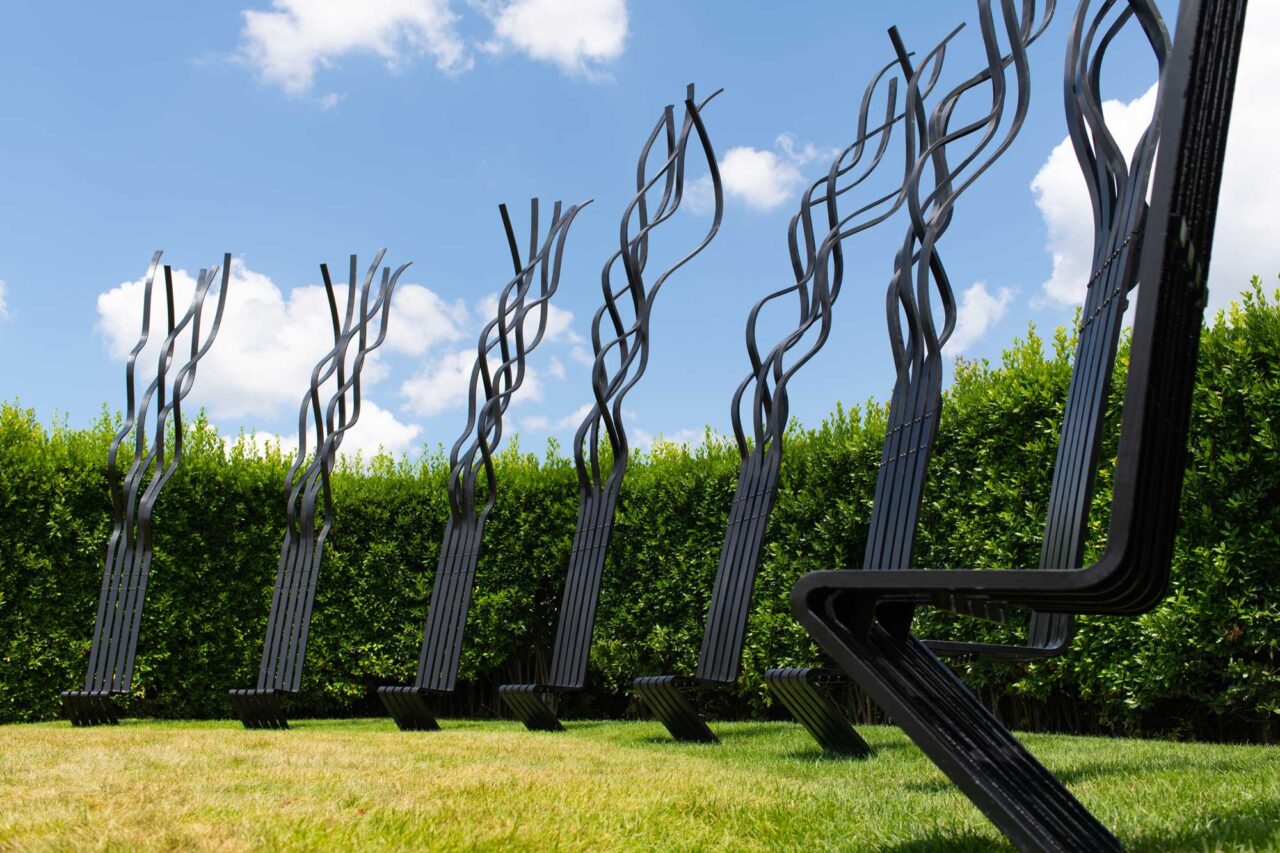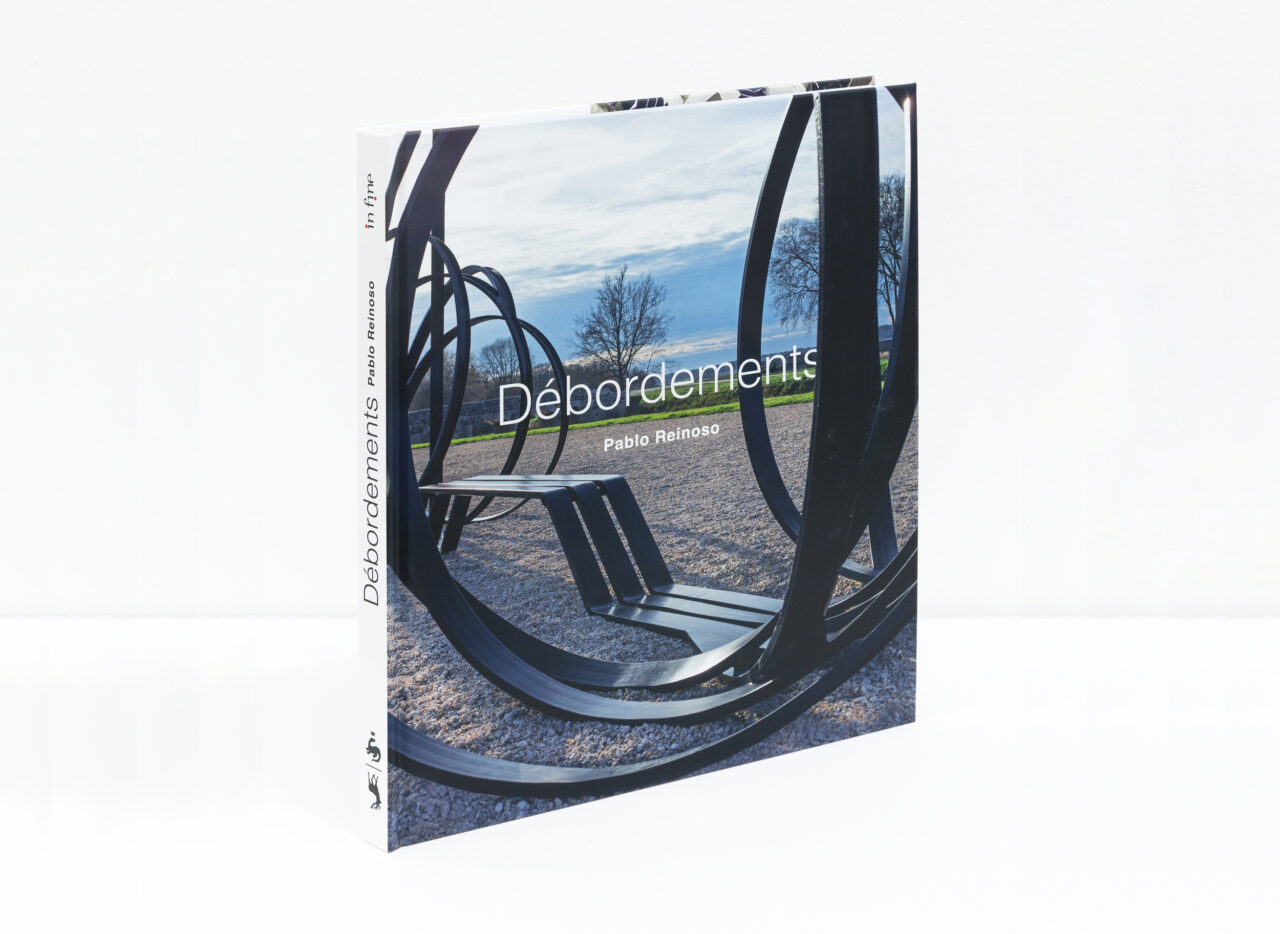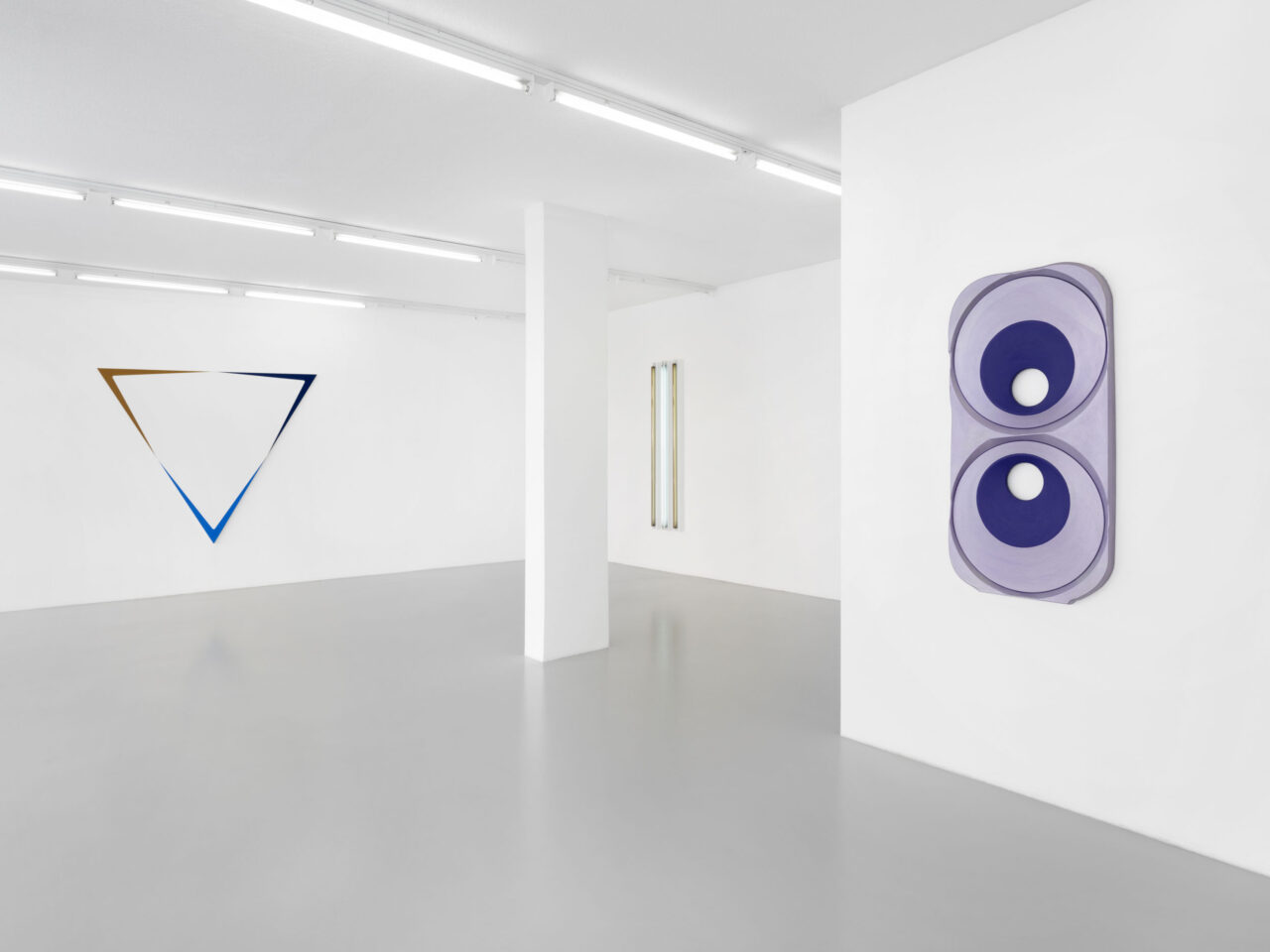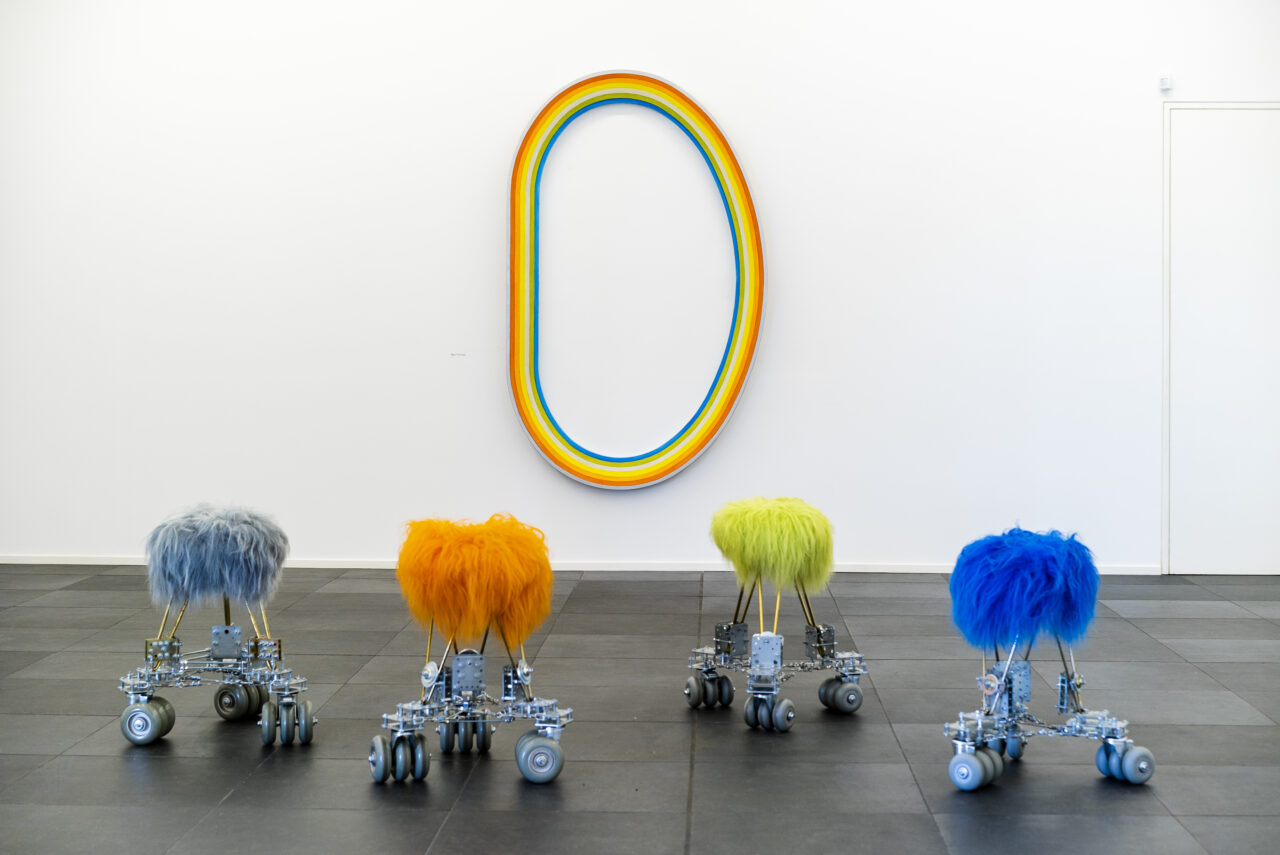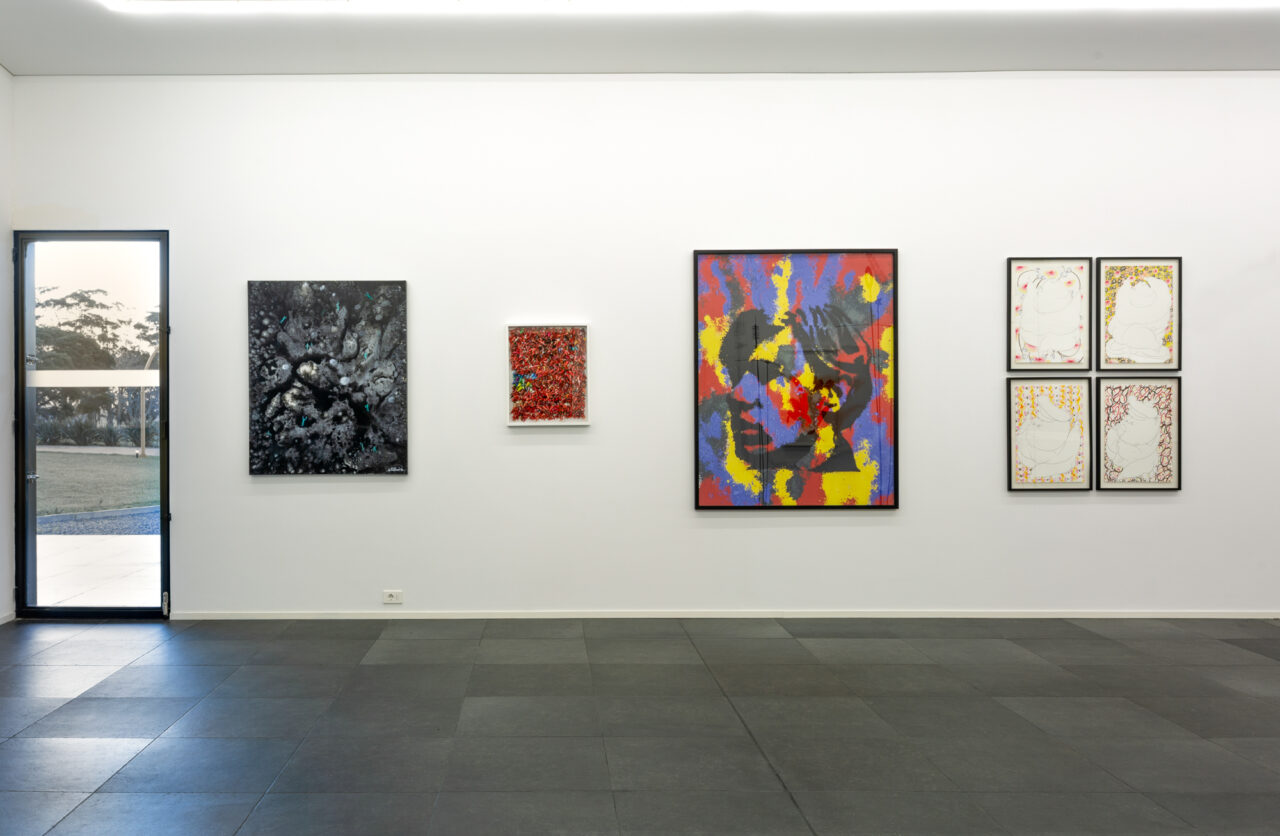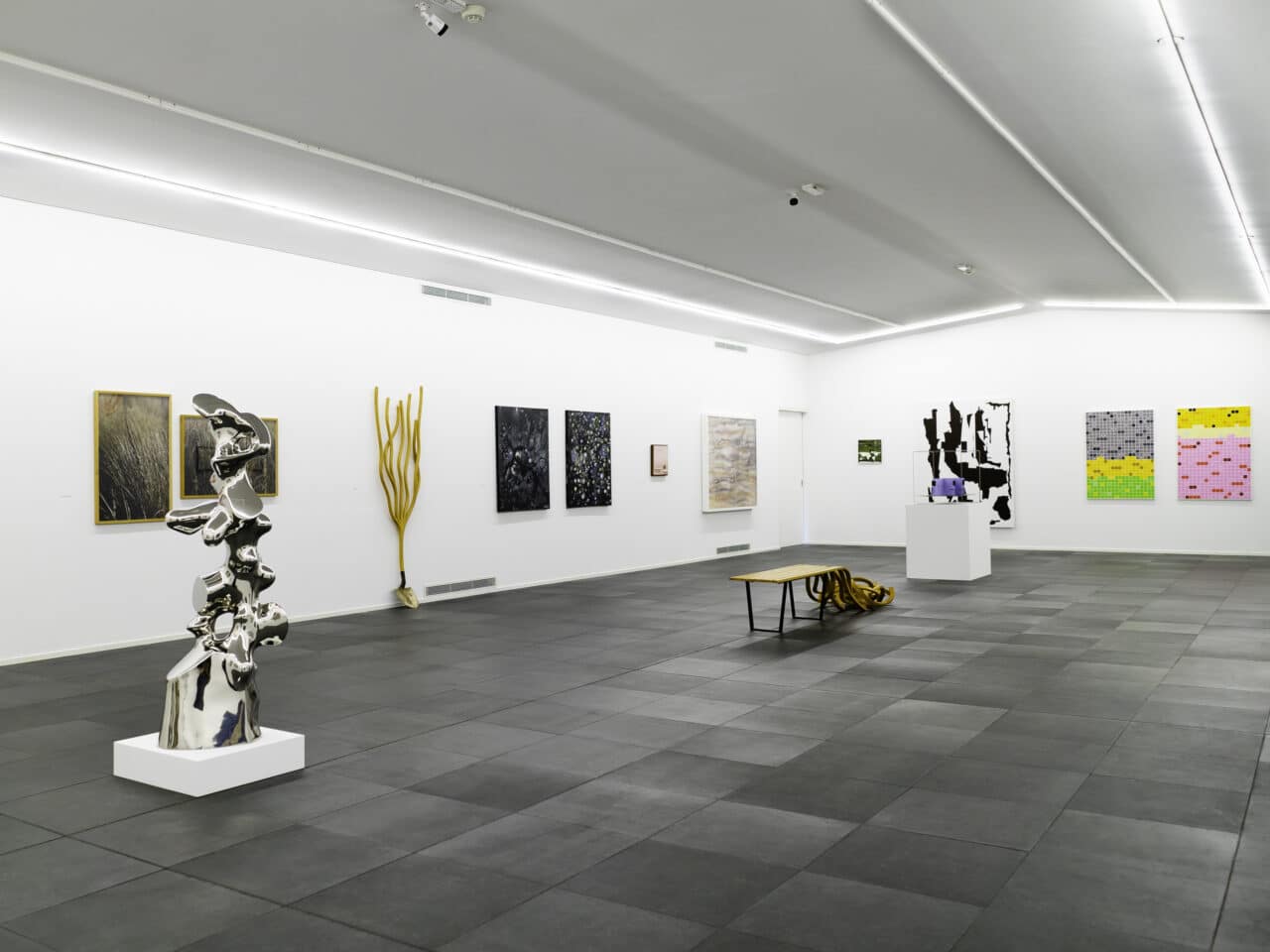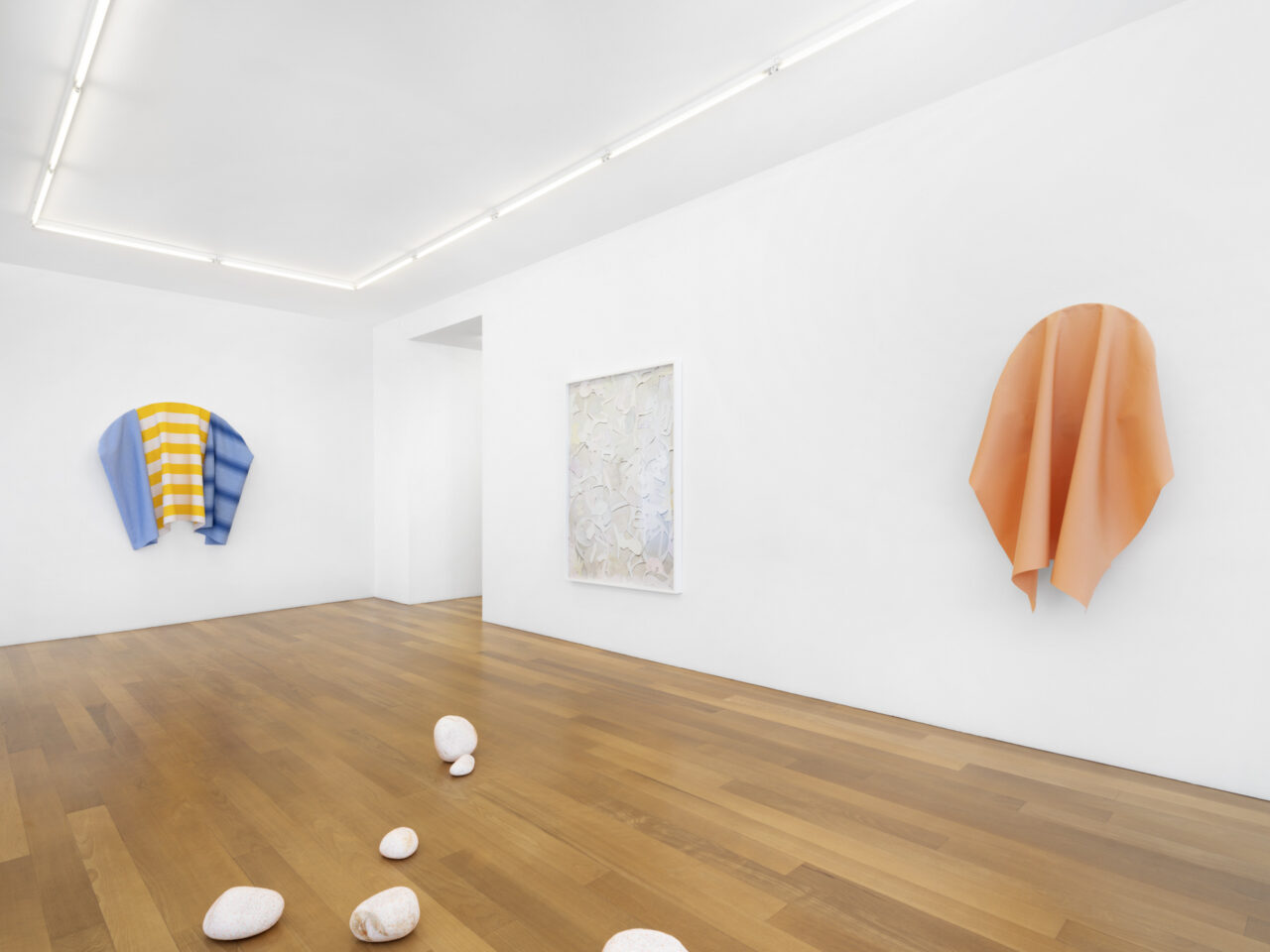Pablo Reinoso
Pablo Reinoso
19.05.22 → 23.07.22
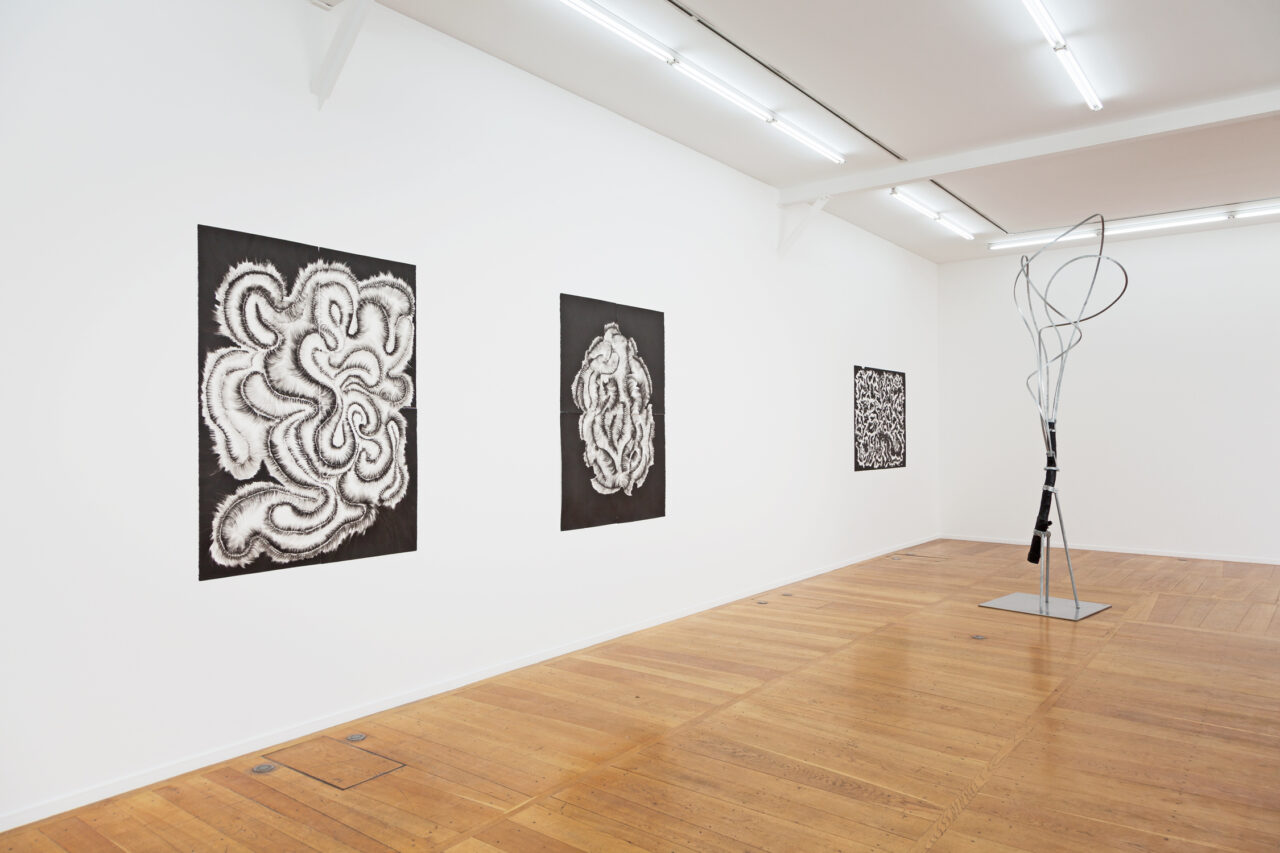
Public opening Thursday May 19, 3 – 8 pm
On the occasion of Paris Gallery Weekend
We are pleased to announce Pablo Reinoso’s first solo exhibition at Xippas Paris, in parallel with the “Débordements” exhibition presented at the Domaine national de Chambord (May 1st – September 4th). The artist has taken over the two floors of the gallery to transform them into a place of experimentation, where the materials are freed from their rigidity and come to life. Like wild plants, wood and metal escape of their own accord. They proliferate, crawling along walls and floors or taking root on the ceilings. The exhibition, of institutional ambition, presents iconic pieces and more recent productions, but also some rare and historical works, enabling a perspective over time.
Pablo Reinoso (born in 1955 in Argentina) is known for his multidisciplinary practice that transforms functional objects from the world of architecture and design into entities in their own right. Following four principles that he borrows from wild nature – reproduction, exuberance, branching and expansion – he “greens” inanimate elements. Once transformed, they blur the boundaries between figuration and abstraction, but also between inside and outside, and call our relationship to space and landscapes into question.
After his obsession with the Thonet chair, the first industrial design object in history, which he has reinterpreted in thousands of ways, Pablo Reinoso tackled more anonymous protagonists – tools, benches, frames. With a spirited lightness and a humour proper to his gesture, he removed them from the space of their usefulness and transplanted them into the field of play. Thus, the crosspieces of the benches are loosened, curled, and carried away in an improvised dance. The frames unframe and no longer serve to delimit the space, but to invade it. The walls decompose and seem on the brink of crashing like waves. Almost functional, but not quite, Pablo Reinoso’s oxymoron-sculptures harbour a contradiction and embody a suspended movement. A “mobile immobility,” to use Michel Serres’ definition.
And yet, Pablo Reinoso’s works do not merely divert the elements of language proper to the aesthetics of design. They are rooted in a broader vision, with biomorphic motifs. This vision is characterised by a deep respect for nature, an ethical stance, but also a real fascination, to the point of imitation, which underlies his practice. From his first sculptures dating back to the 70s, Pablo Reinoso sought to enliven the sculpted material and bring out anthropomorphic forms. He produced his “articulated trunks” and notably El Virapita (1975), a historical work in which rounded wooden fragments, like bones, fit together and create knots. We see in it the principle of articulation, directly linked to the human body. Nature becomes humanised. It does not borrow man’s face, but his flesh, which it pushes to abstraction to embody the mutual vitality of the two.
The search for vitality takes another form in his Respirantes sculptures, where a minimalist square comes alive and begins to move. The starting point for this series, which began in the 1990s and has been updated over the past decade, is a bold question: “how to sculpt the unsculptable?” In this case, air, accompanied by fabric, and consequently by the sewing machine, takes the place of wood or metal and becomes the primary material. The goal remains the same: to embody the vital momentum. Thus, the air is transformed into breath – that of life – and then into breathing, which, like the beating of the heart, gives rhythm to every living being. The result is a meditative work that invites us to align ourselves with it and to follow our own breath, as in mindfulness meditation practices. The sculpture also evokes speech and the act of introspection evacuated through psychoanalytic practices.
In Pablo Reinoso’s most recent works, two new directions appear. The first includes the trees from the ‘Up Rooted’ cycle, in which elements of natural appearance transform into their opposite, reinforcing their virtuoso artificiality. Thus, the branches of trees, moulded and cast in bronze, “transgress” their frozen form to embody a dancing abstraction. Supported by metal rods like prostheses, his sculptures appear simultaneously immobilised, almost crucified, but also liberated, thanks to the serpentine movement of the steel component. There is something robotic about his android-trees, where technology complements nature to remake and support it.
The second direction reappears through the Indian ink drawings that Pablo Reinoso began to create during the lockdown and that he calls Éclosions. The format may seem surprising, but this would be forgetting that his gesture as a sculptor is always preceded by that of a draftsman, and that his sculptures are like drawings in space, especially when they detach themselves from their “object-like” nature to move towards abstraction. Thus, this transition to an intimate, two-dimensional format seems logical, especially since the subject is inspired by the poetry of the microscopic, of vibrating cells. Life is locked in these fragile membranes, like a coiled potentiality, in a foetal state. It preserves itself there, waiting to be ready to assert itself in existence, generating “landscapes, movement, waves, life, time, breathing.” Sculpting life forms in matter.
Pablo Reinoso is a Franco-Argentine artist who has lived and worked in Paris since 1978.
His work has been exhibited in international institutions and in the framework of major artistic events, including the Musée d’Art Moderne de la Ville de Paris, the Georges Pompidou Centre, the Museum of Modern Art of Buenos Aires, the Museum of Arts and Design in New York, the Grassi Museum in Leipzig, the Boghossian Foundation in Brussels, the Tokyo Metropolitan Art Museum, the MUDAC in Lausanne, the CID – Centre d’innovation et de design at Grand Hornu, the Venice Biennale, the FIAC Hors-les-murs, the Bienalsur and AGORA, the Biennale of Bordeaux. His works are part of the collections of the MALBA and the Museum of Modern Art of Buenos Aires, the Fonds national d’art contemporain in Paris, the Museum of Modern Art in São Paulo, the MACRO Rosario and the MUSAC in Leon in Spain.
From May 1st to September 4th, 2022, the Domaine national de Chambord (France) devotes a monumental exhibition to him.
Exhibition views
-
![Pablo Reinoso Xippas Paris 2022_10']()
-
![Pablo Reinoso Xippas Paris 2022_11]()
Pablo Reinoso, exhibition view, Xippas Paris, May 19 - July 23, 2022
-
![Pablo Reinoso Xippas Paris 2022_07]()
Pablo Reinoso, exhibition view, Xippas Paris, May 19 - July 23, 2022
-
![Pablo Reinoso Xippas Paris 2022_007]()
Pablo Reinoso, exhibition view, Xippas Paris, May 19 - July 23, 2022
-
![Pablo Reinoso Xippas Paris 2022_14]()
Pablo Reinoso, exhibition view, Xippas Paris, May 19 - July 23, 2022
-
![Pablo Reinoso Xippas Paris 2022_15]()
Pablo Reinoso, exhibition view, Xippas Paris, May 19 - July 23, 2022
-
![Pablo Reinoso Xippas Paris 2022_05]()
Pablo Reinoso, exhibition view, Xippas Paris, May 19 - July 23, 2022
-
![Pablo Reinoso Xippas Paris 2022_03]()
Pablo Reinoso, exhibition view, Xippas Paris, May 19 - July 23, 2022
-
![Pablo Reinoso Xippas Paris 2022_02]()
Pablo Reinoso, exhibition view, Xippas Paris, May 19 - July 23, 2022
-
![Pablo Reinoso Xippas Paris 2022_27]()
Pablo Reinoso, exhibition view, Xippas Paris, May 19 - July 23, 2022
-
![Pablo Reinoso Xippas Paris 2022_16]()
Pablo Reinoso, exhibition view, Xippas Paris, May 19 - July 23, 2022
-
![Pablo Reinoso Xippas Paris 2022_19]()
Pablo Reinoso, exhibition view, Xippas Paris, May 19 - July 23, 2022
-
![Pablo Reinoso Xippas Paris 2022_20]()
Pablo Reinoso, exhibition view, Xippas Paris, May 19 - July 23, 2022
-
![Pablo Reinoso Xippas Paris 2022_22]()
Pablo Reinoso, exhibition view, Xippas Paris, May 19 - July 23, 2022
-
![Pablo Reinoso Xippas Paris 2022_24]()
Pablo Reinoso, exhibition view, Xippas Paris, May 19 - July 23, 2022

